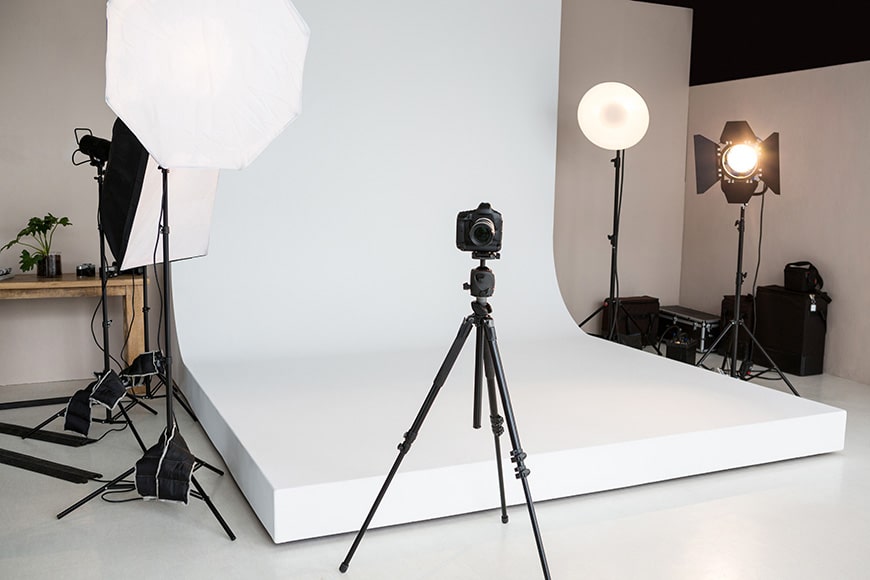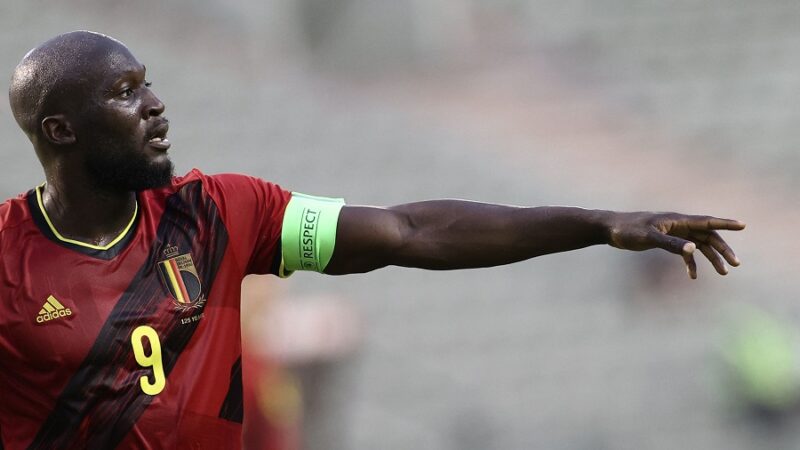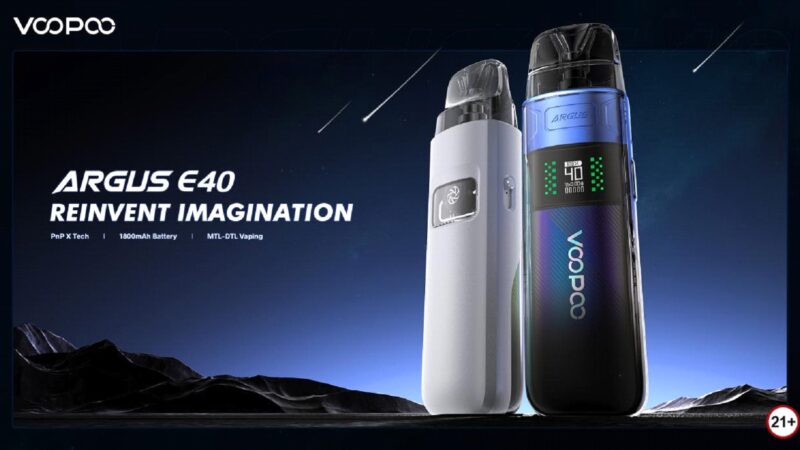Popular Lighting Techniques for Studio Photography

Studio photography is a dance between the photographer and light, a harmonious collaboration that defines the mood, and of course lights the subject.
Natural Light Studio Photography: Harnessing the Power of the Sun
While studio photography often conjures images of artificial lighting setups, natural light studios are popular. Photography studios equipped with ample windows or glass walls can harness the soft, diffused glow of natural light, creating a serene and organic ambiance. This approach is particularly favored for portrait photography and boudoir photography, as it produces flattering, even illumination that highlights the subject’s features without harsh shadows.
To maximize the potential of natural light, photographers often position their subjects strategically in relation to the source. Side lighting can create depth and dimension, while front-facing light ensures an evenly illuminated, classic look. The key lies in understanding the nuances of sunlight throughout the day and leveraging its transformative qualities to capture moments bathed in the warmth of natural radiance.
Softbox Lighting: Embracing Gentle Illumination
Enter the softbox, a versatile and beloved tool in the studio photographer’s kit. Resembling a box with a diffused front panel, the softbox diffuses light, eliminating harsh shadows and producing soft, flattering illumination. This makes it an ideal choice for portraits, product photography, and any scenario where a gentle and even spread of light is desired.
Softboxes come in various shapes and sizes, allowing photographers to tailor the lighting to their specific needs. Square, rectangular, or octagonal softboxes each offer unique characteristics, providing flexibility in achieving the desired mood and aesthetics. Whether it’s a dramatic portrait with a single softbox casting subtle shadows or a product shoot requiring uniform lighting, the softbox is a reliable workhorse in the studio.
Umbrella Lighting: Affordable and Effective
A staple in studio setups, umbrella lighting offers an affordable yet effective solution for achieving soft and diffused illumination. The umbrella, when paired with a studio strobe or continuous light source, reflects and spreads light evenly across the subject. This creates a flattering and soft glow, making it an excellent choice for both amateur and professional photographers.
Photographers can experiment with different umbrella styles, such as shoot-through or reflective umbrellas, each influencing the quality and direction of light. Shoot-through umbrellas cast a softer, more diffused light, while reflective umbrellas bounce light back, offering a slightly more directional illumination. The versatility and ease of use make umbrella lighting a go-to choice for various genres, from portraiture to still life.
Ring Light: The Halo of Radiance
In recent years, the ring light has gained immense popularity for influencers and makeup artists, for its distinctive ability to create a captivating halo effect in the eyes of subjects. This lighting is also used by photo booth businesses to improve the light quality of photo booths.
Comprising a circular arrangement of LED or fluorescent bulbs, the ring light produces uniform illumination without casting strong shadows. This makes it particularly favored in beauty and fashion photography, where it enhances facial features and achieves a glamorous, ethereal glow.
Photographers often position the camera lens within the center of the ring light, allowing for even, shadow-free illumination on the subject’s face. The unique catchlight created by the ring light in the eyes adds a mesmerizing and attention-grabbing element to portraits. With its ability to create a flattering and captivating look, the ring light has become a favorite tool in the arsenal of many contemporary photographers.
Rembrandt Lighting: Sculpting with Shadows
Named after the famed Dutch painter, Rembrandt lighting is a classic and sophisticated technique that adds depth and dimension to studio portraits. Characterized by a small, triangular patch of light on the shadow side of the subject’s face, this technique requires careful positioning of the key light. Typically, the key light is placed at a 45-degree angle from the camera and slightly elevated, casting a triangular highlight under the eye on the shadowed side.
Rembrandt lighting is renowned for its ability to sculpt the face, creating a chiaroscuro effect reminiscent of classical paintings. While it introduces shadows, they are purposeful and contribute to the overall drama and mood of the image. This technique is particularly favored in portrait photography and is often utilized to convey a sense of gravitas and timeless elegance.
Butterfly Lighting: Embracing Elegance and Symmetry
True to its name, butterfly lighting produces a symmetrical and centrally placed shadow under the subject’s nose, resembling the delicate wings of a butterfly. Achieved by positioning the key light directly in front of the subject and slightly elevated, this technique creates a flattering and evenly illuminated look.
Popularized in classic Hollywood glamour photography, butterfly lighting is renowned for its ability to reduce facial shadows and highlight the bone structure. It produces a soft, glamorous effect, making it a favorite for beauty portraits and high-key photography. The simplicity and elegance of butterfly lighting contribute to its enduring popularity in the realm of studio photography.
Split Lighting: Crafting Drama through Shadows
For photographers seeking to infuse their images with drama and intrigue, split lighting provides an alluring solution. This technique involves positioning the key light to one side of the subject, casting one half of the face in shadow while the other basks in the glow of illumination. The result is a visually arresting image with a strong interplay of light and shadow.
Split lighting is particularly effective for creating mood and emphasizing facial contours. It introduces a sense of mystery and depth, making it a favored choice in genres such as portrait photography, where storytelling through visuals takes center stage. Photographers can experiment with the placement of the light source to control the intensity and angle of the split, allowing for creative variations in the final image.
Rim Lighting: Adding Depth and Definition
Rim lighting, also known as edge or back lighting, involves positioning a light source behind the subject to create a subtle halo of illumination along the edges. This technique adds depth and separation, emphasizing the contours of the subject against the background.
Rim lighting is particularly effective when photographing subjects with dark hair or clothing, as it helps prevent them from blending into a dark backdrop. It also creates a sense of three-dimensionality, making the subject stand out in a visually compelling way. Rim lighting is often utilized in portrait, fashion, and commercial photography to add a touch of elegance and sophistication.
High Key and Low Key Lighting: Setting the Tone
High key and low key lighting are contrasting approaches that set the tone and mood of a photograph by controlling the overall brightness levels. High key lighting involves illuminating the scene to create a bright, evenly lit image with minimal shadows. This technique is often associated with a light and airy aesthetic, making it popular for fashion, beauty, and commercial photography.
On the other hand, low key lighting embraces shadows and a darker overall tone, creating a moody and dramatic atmosphere. This technique often involves using a single, strategically placed light source to selectively illuminate the subject while allowing the background to fade into darkness. Low key lighting is frequently employed in genres such as film noir, creating a sense of mystery and intrigue.
Colored Gel Lighting: Painting with Hues
Beyond the traditional realm of white light, colored gel lighting introduces a vibrant and creative dimension to studio photography. Colored gels, transparent sheets of colored material placed over the light source, can transform the mood of an image by casting a wash of color onto the subject and background.
Photographers use colored gels to evoke specific emotions, enhance storytelling, or create visually striking compositions. The choice of colors can range from subtle and harmonious to bold and contrasting, offering endless possibilities for creative expression. Colored gel lighting is a favorite in genres such as fashion, editorial, and experimental photography, where the infusion of color becomes an integral part of the visual narrative.
Whether harnessing the gentle embrace of natural light, sculpting with shadows in Rembrandt lighting, or infusing drama with split lighting, each technique contributes to the creation of visually compelling and emotionally resonant images.
Photographers, equipped with a nuanced understanding of these lighting techniques, possess the ability to shape narratives, convey emotions, and unveil the unique beauty of their subjects. Studio lighting, with its endless possibilities and creative potential, remains a captivating journey for those who seek to capture the essence of the human experience through the lens of light.





